The days of manual sales outreach are dead. Sales tech is its pallbearer. The same goes for tracking customers in spreadsheets, blindly sending email follow ups, and begging to be connected to a decision maker.
And that’s something to celebrate. Only 34% of an average sales agent’s time is spent actually selling. The rest is spent on things like data entry, prospecting, and scheduling. Sales technology aims to fix that by streamlining- or even automating- many of the tedious tasks that keep you from selling.
But with so many tools and services available, how do you know what your sales team really needs? Below, we’ve covered 10 of the most useful types of sales tech, along with what they do and why you’d need them. But first, let’s start at the top…
- What is sales tech?
- What does sales tech stack mean?
- 10 Types of Sales Tech
You might sometimes see the term “sales tech” confused with “sales automation” or “sales enablement”, but these aren’t the same thing.
- Sales automation is the process of automating certain steps in your sales funnel. It’s an outcome of using sales tech.
- Sales enablement is the process of providing your sales team with the resources, content, and information they need to increase sales. It’s the goal of using sales tech.
Knowing what’s in your sales tech stack, and how it works together, is important when considering new technologies.
1. Customer Relationship Management (CRM)
 Get this tool
Get this tool
What it is:
At its most basic, a CRM is software that organizes all of your interactions, communications, and data about your customers. That means all purchases, payments, quotes, calls, emails, chats, agent notes, etc. in one place.
But a CRM isn’t just a database. It acts as a dynamic dashboard that lets you track leads across the entire sales lifecycle (and beyond).
Many CRMs go even further, using the data to give insights like lead scoring, segmentation, forecasting, and sales reports.
Why you need it:
- Provides a single source-of-truth for customer data to your sales, marketing, and service teams.
- Removes the need to manually track calls, emails, chats, etc.
- Allows sales agents to quickly access a customer’s sales activity and purchase history.
- Gives you the ability to scale your sales processes.
Good vs. Great:
A good CRM will automate the collection and organization of your customer data. A great CRM will act as a platform for your other sales tech, integrating all of your business data in one central location.
Examples
- HubSpot CRM
- Salesforce
2. Sales Prospecting Tools
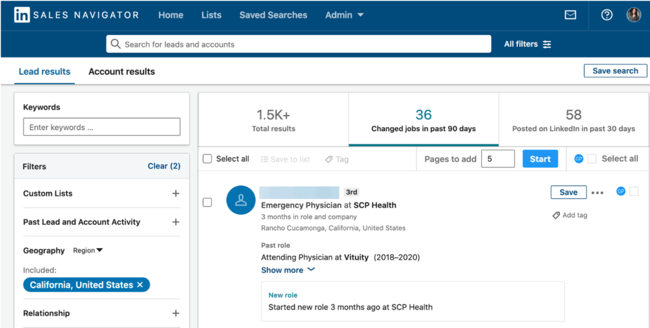
Image Source
What it is:
Prospecting tools are software that automate the process of finding and qualifying leads.
Some prospecting tools do this by gathering information about visitors to your website. Others pull demographic data from social media sites like LinkedIn or Twitter. Still, others build an internal database by scraping public and private data.
You can then sort and filter these potential leads by whatever criteria are important to you– company size, geography, behavior, etc.
Why you need it:
- Eliminates the need to manually hunt for prospects (and their contact info).
- Discovers prospects you may otherwise have not considered.
- Flag engaged leads by behavior (such as website viewership).
Good vs. Great:
Good prospecting tools help you build a prospect list, complete with contact info. Great prospecting tools use AI to unearth similar leads based on your ideal customer profile.
Examples
- HubSpot Sales Leads (included in Sales Hub free and above)
- LinkedIn Sales Navigator
3. Lead Enrichment Tools

Image Source
What it is:
Lead enrichment tools find the missing pieces of your prospect lists or CRM contacts. They do that by crawling the web and building databases of job titles, email addresses, phone numbers, etc.
Some enrichment tools will go even further, providing information like what technology a prospect uses, company revenue, funding history, headcount, etc. This is especially useful for those who do account-based sales, where you need to focus on specific attributes.
When you connect your CRM or prospect list to the lead enrichment tool, it will compare your existing contact lists against their known information.
Why you need it:
- Flesh out the demographic and firmographic data of your contact lists.
- No more scouring the web to try to find contact information.
- Helps identify key decision makers.
Good vs. Great:
Good enrichment tools will update their database regularly. Great enrichment tools connect to your CRM to automatically update your contact lists regularly.
Examples
- Clearbit
- LeadGenius
4. Call Tracking and Call Analytics
![]() Get this tool
Get this tool
What it is:
Call tracking and analysis tools record, transcribe, and gather data about your sales calls. And we don’t just mean basic data like call length or frequency. These tools gather deeper data, like marketing source, campaign, and channel.
They analyze the transcripts to allow you to search calls by keyword, flag comments for training, and identify sales trends.
But their use isn’t just in looking backward. You can also use this data to prioritize your upcoming calls and turn them into an actionable calling queue, by comparing prospects against your call data.
Why you need it:
- Prioritize call queue by likelihood to convert.
- Automatically generate transcriptions for quality and training purposes.
- Filter, sort, and search for phone calls by keyword.
- Create sales reports based on calling data.
Good vs. Great:
Good call tracking tools record your calls and their associated data. Great call tracking tools use AI to analyze the recordings and data to turn them into actionable insights.
Examples
- HubSpot Call Tracking (included in Sales Hub Starter or above)
- CallRail
5. Outreach/Email Platforms
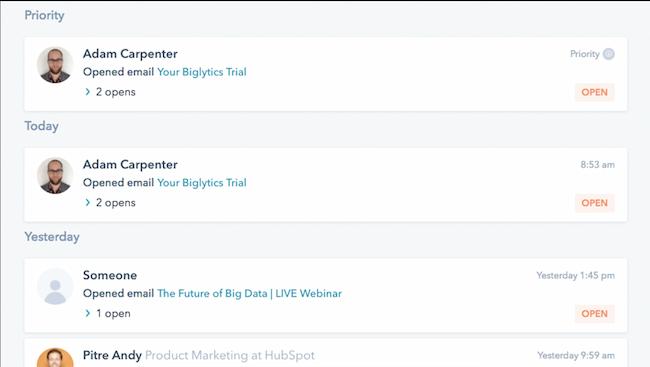 Get this tool
Get this tool
What it is:
Outreach tools help in two ways: 1) automating the most tedious parts of emailing, and 2) providing reporting so you can base your outreach on data-driven decisions.
In the first case, they offer tools like email scheduling, automated follow-up, and template personalization. These let you skip the manual labor without sacrificing the human element that separates sales from spam.
Second, they track important data like open rates, click-through rates, rejection rates, etc. This allows you to A/B test your email campaigns, so you can replicate your wins and learn from your losses.
Why you need it:
- Never forget to follow up with automated workflows.
- Scale your outreach with templates that can be personalized.
- See which subject lines, body text, and CTAs drive results.
Good vs. Great:
Good email tools let you automate replies and follow ups. Great email tools allow you to curate automated workflows based on your prospect’s behavior.
Examples
- HubSpot Email Marketing (included in Marketing Hub free or above) and Email Tracking (included in Sales Hub free or above)
- Buzzstream
6. Scheduling Tools
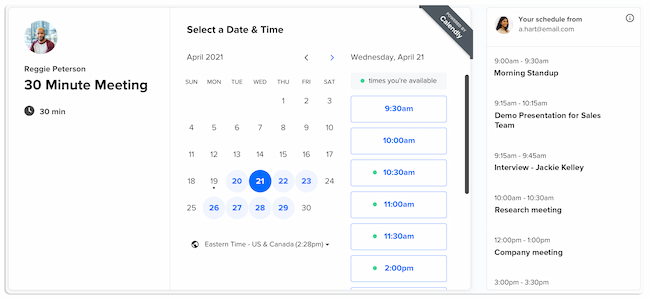
Image Source
What it is:
Rather than email back and forth, or playing phone tag to find a time to meet with a prospect, scheduling tools make this process seamless.
You set your availability (or integrate with your work calendar) and your prospects can then choose a time that works for them.
This way, prospects make appointments that work with their schedules, on their time, without any hassle. Meanwhile, reps can focus on other tasks and prep for their meetings with prospects.
Why you need it:
- Eliminates the back-and-forth dance of trying to find a time that works for everyone.
- Reduces friction for getting prospects to agree to a meeting or demo.
- Coordinate availability across team calendars.
- Round-robin scheduling based on sales rep availability.
Good vs. Great:
Good scheduling apps allow you to choose your availability. Great scheduling apps sync with Office 365 or Google Calendar so your work schedule is always up to date.
Examples
- HubSpot Meeting Scheduler (included with HubSpot free or above)
- Calendly
7. Video Chat and Screen-Sharing Tools
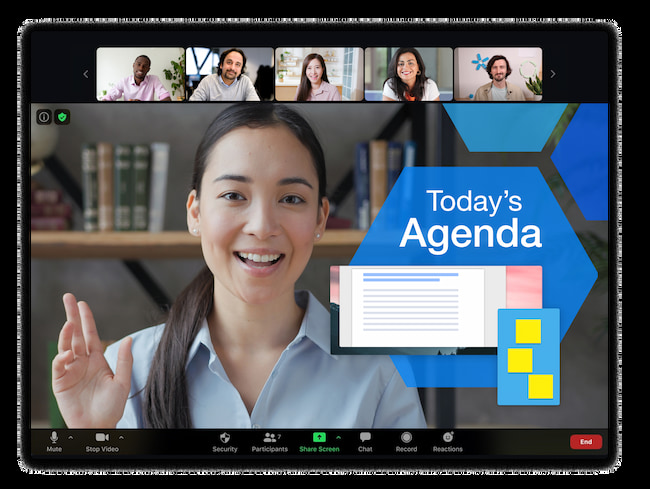
Image Source
What it is:
For sales, video chat is the next best thing to in-person meetings. It’s faster than emailing, and offers more connection than a phone call.
Many video chat services also include screen-sharing features, which allow you to give live demos and slide presentations. You can also use it to co-browse with a potential customer as they shop.
Often times these tools will allow you to record video chats or screen-sharing sessions. This is great for training and performance review.
Why you need it:
- Increase face-to-face interaction with your leads and customers.
- Give live demos and presentations in real time.
- Co-browse with leads for added personalization.
Good vs. Great:
Good video chat tools let you share links so your prospect can easily join. Great video chat tools allow you to seamlessly shift from email, chat, or phone to a video experience.
Examples
- Zoom
- Google Meet
8. Live Chat
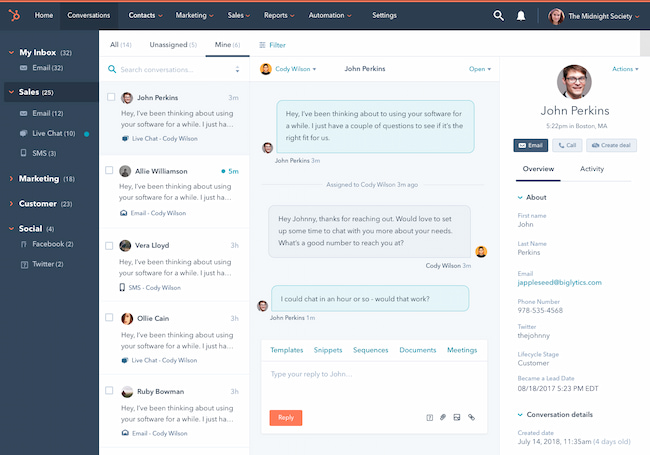 Get this tool
Get this tool
What it is:
Live chat tools provide a chat window on your website or app, where customers can contact a sales agent in real time.
That’s a big deal when 82% of consumers consider an immediate response as important to sales questions.
Many chat tools can be customized to route messages to the right team or rep. If there are no agents available, most chat tools also offer the ability to trigger automated messages or even AI chatbots.
Why you need it:
- Offer real time sales support to customers who don’t want to call.
- Gives a seamless jump from your website or app to a sales agent.
Good vs Great:
Good chat tools notify available agents of incoming messages. Great live chat tools send your messages to a universal inbox where you can also view emails, texts, and social messages.
Examples
- HubSpot Live Chat (included in HubSpot free or above)
- Zendesk Support Suite
9. Sales Reporting Software
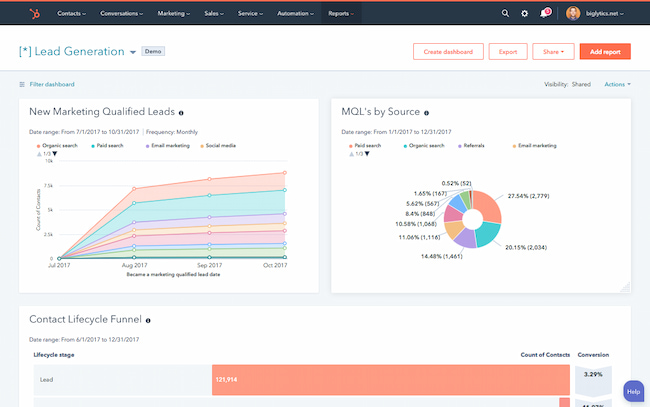 Get this tool
Get this tool
What it is:
Accurate data helps you make accurate decisions. Sales reporting tools help you gather, organize, interpret, and visualize that data.
Different tools may pull different types of data, so consider the needs of your organization. For example, an inside sales team may need to track different KPIs than an outside sales team.
At the most basic level, reporting tools will gather simple metrics like revenue, response time, cost per lead, etc. More robust reporting software can turn those numbers into deeper insights– such as weighted forecasts, pipeline tracking, deal velocity, etc.
Why you need it:
- Identify pain points in your sales process.
- Replicate successful campaigns and strategies.
- Allocate budget and labor based on accurate sales forecasts.
- Prove ROI to your stakeholders.
Good vs. Great:
Good reporting software will cover all the necessary sales KPIs. Great reporting software will let you customize your KPIs, sales funnel, channel attribution, and reports.
Examples
- HubSpot Sales Tracking Software (included in Sales Hub free or above)
- Looker Sales Analytics
10. Project Management Tools
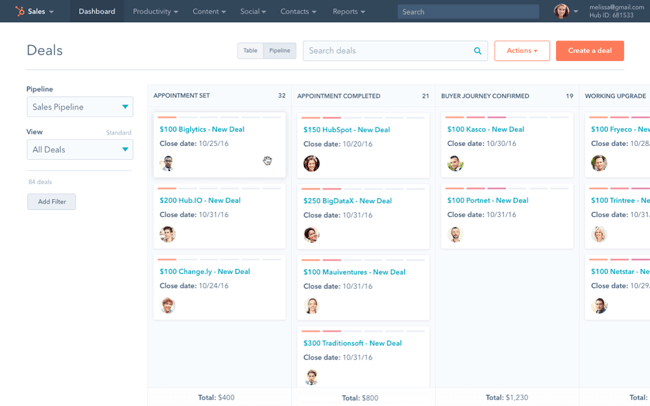 Get this tool
Get this tool
What it is:
If you’ve outgrown a simple to-do list, project management software is the next step. These tools help you plan and assign tasks, set deadlines, and track your progress.
This is especially helpful for account-based sales teams, who may need to collaborate on closing deals.
These tools also give sales managers insight into productivity, time management, and project velocity.
Why you need it:
- Organize all projects and tasks in one central location.
- Collaborate on tasks with shared comments, assets, and timelines.
- Track work hours with project reporting.
Good vs. Great:
Good project management tools offer customizable task creation and to-do lists. Great project management tools automate task creation and to-do lists, so you’re always up to date.
Examples
- HubSpot Projects
- Asana
Grow Better With the Right Inside Sales Technology
One of the best ways to discover the right sales tools for your team is by doing your homework. Don’t be afraid to experiment with different technologies to decide the right one for you.
You might discover a combination of technologies is the right solution, or a single tool is all you need. Many times, a good CRM will incorporate most of the tools in this list. So, begin growing better today by determining which technology your sales team needs to support their efforts

![]()



